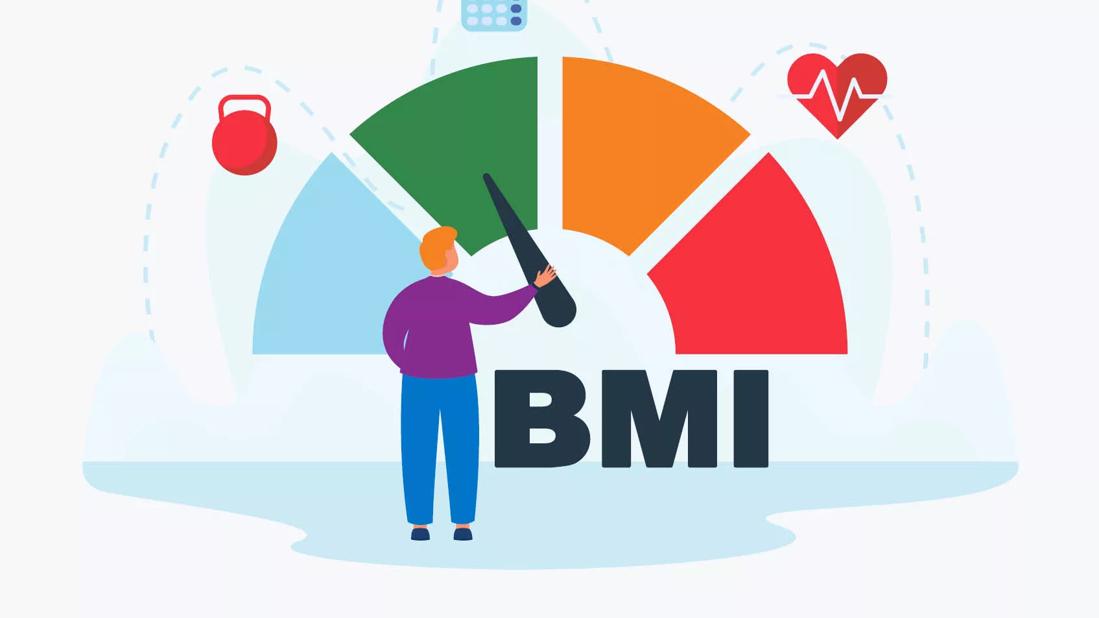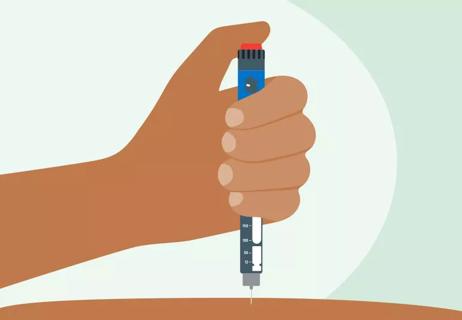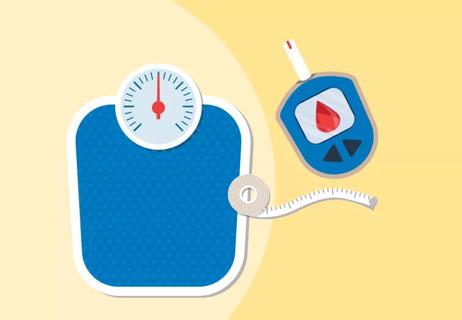They’re legit health conditions, and not entirely in your control

They’re words we hear all the time, but that doesn’t make them any less off-putting: overweight and obesity.
Advertisement
Cleveland Clinic is a non-profit academic medical center. Advertising on our site helps support our mission. We do not endorse non-Cleveland Clinic products or services. Policy
It can be hard not to take these terms as a criticism. As an indication that you did something wrong or that you’re not trying hard enough.
But we hope you know that’s not the case. And we know it, too.
“There is this misconception that obesity is solely a behavioral disorder,” says psychologist Leslie Heinberg, PhD, who specializes in obesity care. “Behavior plays a role, but there are so many genetic and biological factors, hormonal factors, your microbiome, what zip code you live in, your access to healthy activities, healthy foods, healthcare and much more. Unfortunately, though, there’s a lot of stigma — even an internalized stigma — for people who themselves have obesity.”
We talked with Dr. Heinberg about overweight and obesity, the risks of living with these conditions, the truth about their causes and how to manage them.
Overweight and obesity are more than numbers on a scale. They’re metabolic conditions that put you at risk for a number of chronic health conditions.
Because we’re talking about health conditions, most healthcare providers have moved away from describing people as “overweight” or “obese” and instead are talking in terms of “having overweight” or “having obesity.”
Advertisement
This shift in language acknowledges that overweight and obesity are conditions people live with, rather than judgments of individuals themselves. It’s like saying someone “has high blood pressure” or “has a broken ankle.” For the grammar lovers out there, it’s a matter of using overweight and obesity as nouns (things) rather than adjectives (describing words).
“Obesity is a disease,” Dr. Heinberg states. “When we use language like, ‘So-and-so is obese,’ we’re defining that person in terms of their disease, instead of recognizing that we’re all incredibly complex beings. None of us is defined by any one thing, and that includes our health conditions.”
Saying someone “has obesity” or is “living with obesity” sounds pretty natural. But Dr. Heinberg acknowledges that some people see verbiage like “having overweight” or “living with overweight” as grammatically icky. That’s because, in most English-speaking places, we’re used to “overweight” being used as a description in front of a noun, rather than as a noun itself.
But as we know, language evolves. As we hear phrasing like “having overweight” more often, it will become second nature, much in the same way that “Google” has become a verb or “selfie” is shorthand for taking a picture of yourself.
Dr. Heinberg suggests that in the future, perhaps overweight may be better described as “pre-obesity” in the same way that people can be diagnosed with “prediabetes.” That would be a more apt description of the condition, and more grammatically pleasing as well.
Healthcare providers typically use body mass index (BMI) as a first indication to understand your risk for overweight and obesity and their associated conditions. You can use this online calculator from the U.S. Centers for Disease Control and Prevention (CDC) to find your BMI.
The following table can be used to define various weight-related conditions in adults. (Note that this chart should be used for adults 18 and older. There are other measurements to understand overweight and obesity in children and teenagers. More on that later.)
| BMI | Condition |
|---|---|
| 18 or less | Underweight |
| 19–24 | Optimal |
| 25–29 | Overweight |
| 30–34 | Class I obesity |
| 35–39 | Class II obesity |
| 40 or higher | Class III obesity |
| BMI | |
| 18 or less | |
| Condition | |
| Underweight | |
| 19–24 | |
| Condition | |
| Optimal | |
| 25–29 | |
| Condition | |
| Overweight | |
| 30–34 | |
| Condition | |
| Class I obesity | |
| 35–39 | |
| Condition | |
| Class II obesity | |
| 40 or higher | |
| Condition | |
| Class III obesity |
But here’s the thing: BMI isn’t a perfect measurement. It may not accurately reflect your health status, particularly if you have a high muscle mass. Muscle is denser than fat, so being very muscular can raise your BMI, but not raise your risk for obesity and obesity-related conditions.
Your healthcare provider should consider BMI as a first-pass look at your health. They may also look at indications like waist circumference or perform some more intensive body-composition tests like a DEXA scan or bioelectrical impedance analysis to gather more information.
Advertisement
“Your provider should be considering your BMI as one part of understanding your overall health,” Dr. Heinberg says. “In a lot of people, it’s not the only indication of whether you’re at risk for obesity and related conditions, but it’s an important factor to consider.”
To understand whether children and adolescents are at risk for obesity and related conditions, providers less commonly use BMI alone. Rather, they tend to consider where a child’s BMI falls as compared with others their age. It’s called a percentile.
The CDC says that children and teens with a BMI in the 95th percentile or higher (meaning their BMI is higher than 95% of their peers) are considered to be at risk for obesity-related conditions.
But Dr. Heinberg notes children and teens have a serious advantage on their side when it comes to managing their weight: They’re still growing.
“For kids, interventions often don’t focus on weight loss, but rather on helping them maintain their weight and give their height a chance to catch up,” she adds.
In a perfect world, the best bet for your health and your quality of life is to live within that optimal BMI range (between 19 and 24).
But we know the world isn’t perfect, and it’s harder for some people to be in that range than others. Even still, it’s important to understand how a BMI in the overweight or obesity range can affect your health.
Advertisement
Overweight and obesity are often talked about in tandem, but they do carry different risks in regard to your health and overall well-being.
Dr. Heinberg says that having overweight (BMI between 25 and 29) doesn’t necessarily raise your risk for health complications on its own.
Think of having overweight as more like a fork in the road, where you have an opportunity to manage your weight and move toward the optimal range before turning the corner into obesity and its potential for more serious risks.
“Having overweight is an opportunity for you and your provider to discuss the factors that contribute to your BMI and strategies to manage your weight,” Dr. Heinberg says. “It’s a potential turning point for people.”
When you’re living with obesity, on the other hand, your risk for serious conditions grows significantly.
Living with obesity has been linked to dozens, even hundreds of health conditions. Among the most common are:
Many of the forces that affect our weight are beyond our control. Your genetics predispose you to be more likely to have a certain body shape and size. Where you live affects your access to healthcare and your opportunities to maintain a healthy lifestyle. Your race and your sex at birth make a difference. Our bodies themselves are evolutionarily programmed to fight against weight loss. The deck is stacked against us a lot of times.
Advertisement
We do have some amount of control, though, and Dr. Heinberg says that for people living with overweight or obesity, any weight loss is important to lowering your risk for obesity-related illnesses, managing those conditions and living your best life.
“People with overweight especially are in a good position to make big changes to their health for the better,” Dr. Heinberg continues. “Having overweight is an opportunity for intervention and prevention. Moving from the overweight range to the optimal range can just take some small tweaks.”
Similarly, moving from Class II obesity (a BMI between 35 and 39) to Class I obesity (BMI between 30 and 34), for example, can improve your quality of life and add years to your life. Moving from Class I obesity to overweight, likewise, can lower your risk of severe conditions.
“The diet industry can give us this impression that the only option for healthy living is to live in the ‘healthy’ BMI range, but it’s not true,” Dr. Heinberg states.
“For some people, getting into that optimal BMI range might mean losing 100 pounds, which is daunting and overwhelming and incredibly difficult to do and maintain. In reality, any weight loss is going to help. Small changes have big benefits.”
Any weight loss can reduce pressure on your joints and make it easier to go about your daily activities, exercise, play with your children or grandchildren, walk up stairs and more. It will also help you improve your overall health.
So, it’s a matter of setting manageable weight-loss goals and making any lifestyle changes you can in order to move toward that goal. Again, much of it isn’t in your control. That’s OK. But if you can control a few things that are within reach, those changes can majorly improve your health and your day-to-day life.
Dr. Heinberg describes weight-loss strategies as a kind of pyramid.
At the bottom level are the lifestyle adaptations we should all consider as opportunities to improve our health. Those are the things you hear all the time — eating well and exercising.
Lower your intake of processed foods and instead choose lean proteins, fruits and vegetables when you can. Choose exercises you enjoy, and try a variety of ways to move your body to keep from getting bored with the same old, same old. Park a little farther from the door than usual. Take the stairs instead of the elevator if you can.
On the second level of the pyramid are interventions to discuss with your provider. These are options like anti-obesity medications and medically supervised diets.
At the top of the pyramid are surgical interventions, like bariatric surgery, which has been shown to help people lose significant weight and keep it off long term.
“The reason we think about weight management as a pyramid is because even if you’re on medication or have surgery, you still need to work the base of the pyramid,” Dr. Heinberg explains. “You still need to think about diet, and you need to think about physical activity.”
The bottom line? You’re more than your BMI. The healthcare community is learning more and more every day about the conditions of overweight and obesity and how to help you optimize your health.
If you’re at risk for obesity or living with obesity and obesity-related conditions, help is out there. Talk with a healthcare provider. And know that your BMI doesn’t define you.
Learn more about our editorial process.
Advertisement

This diabetes drug is quickly gaining attention for weight loss potential

You can lose 15% of your body weight, plus lower your heart disease and diabetes risks

Your weight-loss plateau isn’t a question of willpower, it’s your body fighting back

And the one thing you can do to turn diabetes around

Taking a stand throughout the day can lower your risk of disease while improving your energy, focus and productivity

Weightlifting and other types of resistance training bring many health benefits

This evidence-based practice is used to help manage pain, relieve menopause symptoms and boost your spirits

If you’re feeling short of breath, sleep can be tough — propping yourself up or sleeping on your side may help

If you fear the unknown or find yourself needing reassurance often, you may identify with this attachment style

If you’re looking to boost your gut health, it’s better to get fiber from whole foods